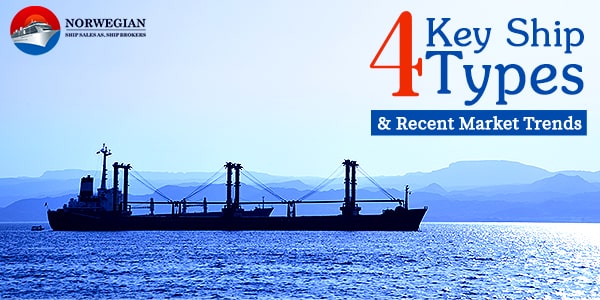As the new year 2019 begins, here is an analysis of the four major ship types, comprising of the Capesize, the LNG carriers, the medium range tankers (the MR1), and the electric & hybrid boats and ships.
Capesizes
The Capesize market is having a good amount of volatility this year as the market is turning uncertain for buyers of materials due to a trade war between the US and China. As a result, there was an unexpected dip in the market last autumn, which tumbled the otherwise strong year for dry bulk ships. In spite of the odds, the Capesize freight rates saw an improvement of 52 per cent year-on-year in the third quarter of last year.
As per an expert, the prospects at the beginning of 2019 is basically bearish, as there is a possibility of a seasonal dip in ton-mile demand in January and February in spite of a gradual increase in the fleet size. The Capesize market offers high returns in spite of being a volatile dry bulk sector, though there are high risks involved.
The management of GoodBulk remains optimistic that there will be strong fundamentals in the supply and demand in the Capesize market, and will have the support of traditional low fleet growth and improvement in tonne miles.
In the third quarter, China delivered six Valemaxes, making the total of newly built deliveries for the last year to 15 with an already existing order of 188, mainly for delivery in 2019. In total, the Capesize fleet has seen an improvement of 2.9% in the last year.
It is reported by MSI that there could be a rise in Capesize spot rates above US$ 25,000 per day in the fourth quarter if the planned shipment targets are met by the iron ore exporters, with the upside descending into the Panamax market as more cargoes are being considered to be split.
Large LNG Carriers
The market for LNG carriers seems more complex. The need for cleaner fuels continues to increase while the ship’s hire rates remain almost the same. There is a dip in some immediate demand due to a warm winter prevailing in China. However, the long term prospects are encouraging for this market.
Between 2018 and 2021, a total of 91 mtpa of new LNG production capacity is expected to start. And 50 mtpa of the new production out of 91 mtpa is expected to be out of the US and is likely to increase the average sailing distances.
However, there will be a need for more vessels during the 3 year period for the LNG production to start up compared to the existing tonnage and order book when there is a high ton-mile requirement.
MR1 Tankers
In spite of improving cargo volumes in 2016 and a firm in 2017, the MR1 market is showing signs of dropping structurally. There is a contraction of the fleet size, and this may offset the drop in demand to a certain extent. There was an increase in earnings for product tankers last month, and the oil tankers showed little relief in the last few months of 2018.
As per the supply side, a South Korean shipyard has received 8 MR orders since August. The product tankers with regards to fleet growth are estimated to be 2.4%, which is the lowest level seen since 2012. And for 2019, the fleet growth is expected to remain constant at 2.4% while there is likely to be a fall in the demolitions and deliveries.
Electric and Hybrid Boats and Ships
There is increasing use of electric and hybrid boats and ships for maritime transportation. A turning point is being felt by the vessel operators as various restrictions related to emissions of gases as well as greenhouse gasses are coming up. They are also seeing the value of having a system that runs solely or in part by a battery, as the rising fuel oil prices are leading to increased fuel costs.
In terms of volume, recreational boating is making the largest and quickest transformation. Inland water vessels, as well as other pleasure vessels, can move straight to pure electric versions due to short ranges the and possibility of opportunity charging. In addition, there is also an increasing trend for pure electric ferries, with its well-charted routes and certain operations, helping to size the battery and make plans for the time to charge.


